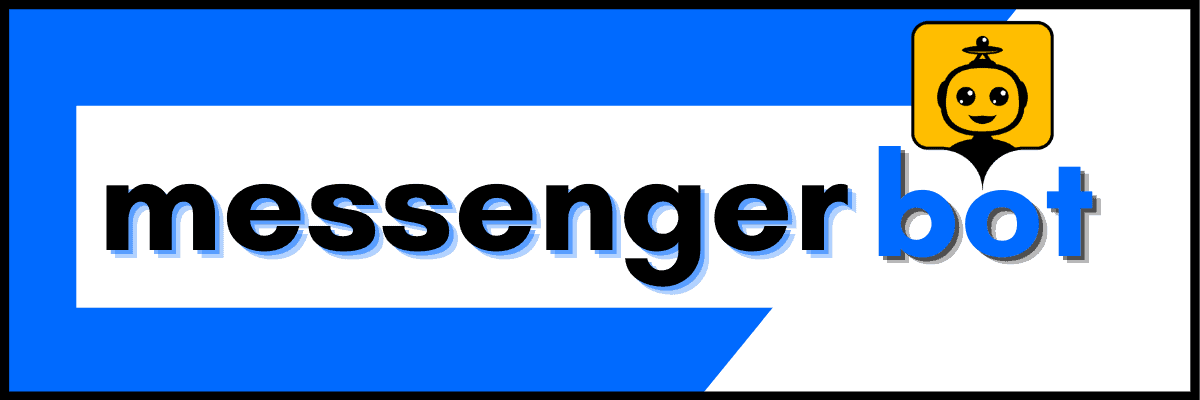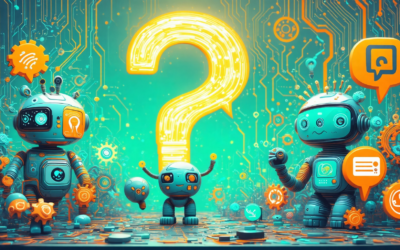In today’s digital landscape, the ability to create a chatbot online has become an invaluable asset for businesses and individuals alike. Whether you’re looking to enhance customer engagement or streamline communication, understanding how to create a chatbot for free opens up a world of possibilities. This ultimate guide will walk you through the essential steps and tools needed to make your own AI chatbot, exploring various platforms that allow you to create your own chatbot free. We will delve into the benefits of utilizing chatbots online free, compare free versus paid solutions, and provide a comprehensive overview of the top free chatbot builders for websites. Additionally, you’ll learn how to build your own AI like ChatGPT and discover best practices for effectively using these tools. Join us as we uncover the secrets to successfully make a chatbot online and leverage this technology to its fullest potential.
Can I create a chatbot for free?
Yes, you can create a chatbot for free using various platforms that offer user-friendly tools and features. This accessibility allows businesses and individuals to enhance their digital communication without incurring costs. Below are some popular options to consider when looking to create a chatbot online.
Understanding Free Chatbot Options
When exploring free chatbot options, several platforms stand out for their ease of use and functionality:
- HubSpot: HubSpot provides a free chatbot builder that allows you to create messenger bots to answer customer questions, book meetings, and qualify leads. This platform is ideal for businesses looking to enhance customer engagement without incurring costs.
- Appy Pie: Appy Pie enables users to create basic chatbots suitable for personal use or small businesses. Its intuitive interface allows for easy customization and deployment.
- Botpress: Botpress is an open-source platform that allows you to build AI chatbots using a visual flow builder. It includes pre-built connectors for various applications, making it a versatile choice for developers.
- Tidio: Tidio offers a free plan that allows you to build chatbots capable of recognizing user intent. This feature enhances user interaction by providing relevant responses based on the user’s queries.
- Selzy: Selzy provides a straightforward way to build chatbots for free, focusing on ease of use and quick setup.
Key Features to Consider:
- Templates: Many platforms offer pre-built templates that simplify the chatbot creation process, allowing you to get started quickly.
- Drag-and-Drop Interface: Look for platforms with drag-and-drop features, which make designing your chatbot more accessible, even for those with limited technical skills.
- Guided Setup: Choose platforms that provide guided steps to help you configure and deploy your chatbot effectively.
By utilizing these platforms, you can create a functional chatbot without any financial investment, enhancing your customer service and engagement capabilities. For more detailed insights on chatbot creation, consider exploring resources from industry leaders like Chatbots Magazine and Gartner.
Benefits of Using Chatbots Online Free
Using free chatbots offers numerous advantages that can significantly benefit your business:
- Cost-Effective Solution: Free chatbots eliminate the need for a financial investment, making them an ideal choice for startups and small businesses.
- Enhanced Customer Engagement: Chatbots can interact with customers 24/7, providing immediate responses to inquiries and improving overall user experience.
- Lead Generation: By automating responses and interactions, chatbots can effectively qualify leads and gather valuable customer data.
- Easy Integration: Many free chatbot platforms offer seamless integration with existing websites and social media channels, allowing for a smooth deployment process.
- Scalability: As your business grows, free chatbots can be upgraded or customized to meet evolving needs without significant costs.
Overall, leveraging free chatbot solutions can streamline your operations and enhance customer satisfaction, making it a strategic move for any business looking to improve its digital communication. For more information on how to maximize your chatbot’s potential, check out our guide on the best AI chatbots.

Can I create my own AI for free?
Creating your own AI for free is entirely feasible, thanks to a variety of open-source platforms and tools available today. Here’s a comprehensive guide to help you get started:
Exploring AI Chatbot Development Platforms
There are numerous platforms that allow you to create a chatbot online without incurring costs. Here are some notable options:
- Google Colab: An open-source platform that allows you to write and execute Python code in your browser, making it easy to build and train AI models without any setup.
- TensorFlow: A powerful open-source library developed by Google for machine learning and deep learning applications. It provides extensive tools and resources for building AI models.
- Keras: A high-level neural networks API, written in Python and capable of running on top of TensorFlow, which simplifies the process of building deep learning models.
- Canva: Offers a free AI art generator that allows users to create artwork from text prompts.
- Grammarly: A free AI content writer that assists in creating polished content for emails, articles, and cover letters.
- Sendbird: A free chatbot builder that enables users to create chatbots with integrated knowledge bases.
How to Create Your Own Chatbot Free
To effectively make your own AI chatbot, follow these steps:
- Identify a Problem: Determine a specific problem your AI will address. This could range from automating customer service to generating creative content.
- Choose Your Tech Stack: Select the appropriate AI platform or technology stack based on your project requirements. Consider factors like ease of use, community support, and scalability.
- Gather Data: Collect relevant data to train your AI model. This could involve scraping data from the web, using public datasets, or generating synthetic data.
- Prompt Engineering: Utilize prompt engineering techniques to fine-tune your AI’s responses and improve its accuracy. This involves crafting specific input prompts that guide the AI in generating desired outputs.
- Deploy and Monitor: Once your AI is built, deploy it on a suitable platform and continuously monitor its performance. Use feedback to make iterative improvements.
By leveraging these tools and following these steps, you can successfully create your own chatbot free, tapping into the vast resources available in the open-source community. For further reading and resources, consider exploring the official documentation of TensorFlow and Keras, as well as tutorials available on Google Colab.
Is AI Chatbot Free?
When exploring the world of AI chatbots, many users wonder about the availability of free options. The good news is that there are numerous platforms where you can create a chatbot online without any cost. However, understanding the differences between free and paid solutions is crucial for making an informed choice.
Comparing Free vs. Paid AI Chatbot Solutions
Free AI chatbots can be a great starting point for individuals and businesses looking to enhance their digital communication. Here are some key differences between free and paid AI chatbot solutions:
- Features: Free chatbots often come with basic functionalities, such as automated responses and simple workflows. In contrast, paid solutions typically offer advanced features like analytics, lead generation, and integration with e-commerce platforms.
- Customization: While free chatbots allow for some level of customization, paid options provide extensive customization capabilities, enabling businesses to tailor the chatbot experience to their specific needs.
- Support: Free chatbot services may have limited customer support, whereas paid solutions often include dedicated support teams to assist with setup and troubleshooting.
- Usage Limits: Many free AI chatbots impose restrictions on the number of interactions or users, which can be a drawback for growing businesses. Paid plans typically offer higher limits or unlimited usage.
For those interested in exploring both free and paid options, platforms like Brain Pod AI provide a range of services that cater to different needs and budgets.
Top Free Chatbot Builders for Websites
If you’re looking to create your own chatbot free, several platforms stand out for their user-friendly interfaces and robust features:
- Messenger Bot: This platform allows you to make chatbot online easily, with features like automated responses and workflow automation.
- ChatGPT: OpenAI’s ChatGPT offers a free tier that enables users to engage in conversations and ask questions across various topics.
- Replika: Focused on companionship, Replika provides a free tier for users to chat and explore diverse subjects.
- Dialogflow: Google’s Dialogflow allows users to create chatbots for free, with options to integrate them into various platforms.
By leveraging these free chatbot builders, you can enhance your online presence and improve customer engagement without incurring costs. Remember to evaluate the limitations of each platform to ensure it meets your needs.
How to Create Your Own AI Like ChatGPT?
Step-by-Step Guide to Creating an AI Chatbot
Creating your own AI similar to ChatGPT involves several steps that require a blend of programming knowledge, access to resources, and an understanding of machine learning principles. Here’s a comprehensive guide to help you through the process:
1. **Utilize the OpenAI API**:
– Access the OpenAI API, which allows you to integrate ChatGPT-like functionalities into your applications. This is the simplest method for developers who want to leverage existing AI capabilities without building from scratch. You can find documentation and examples on the OpenAI website.
2. **Train Your Own Model**:
– **Gather Data**: Collect a large dataset relevant to your desired application. This could include text from books, articles, or conversations.
– **Select a Framework**: Use machine learning frameworks such as TensorFlow or PyTorch to build your model. These platforms provide tools for creating and training neural networks.
– **Model Architecture**: Consider using architectures like Transformer models, which are the foundation of many state-of-the-art language models, including GPT-3.
– **Training Process**: Train your model using powerful GPUs or cloud-based services like Google Cloud or AWS. This step requires significant computational resources and time.
3. **Explore Pre-trained Models**:
– Investigate pre-trained models available on platforms like Hugging Face’s Model Hub. These models can be fine-tuned for specific tasks, saving you time and resources. Fine-tuning involves adjusting a pre-trained model on a smaller, task-specific dataset to improve performance.
4. **Implement a Messenger Bot**:
– If you wish to create a conversational agent, consider integrating your AI with messaging platforms like Facebook Messenger. Use APIs provided by these platforms to deploy your AI as a chatbot, allowing users to interact with it seamlessly.
5. **Continuous Learning and Improvement**:
– Regularly update your model with new data and feedback from users to enhance its performance. Implementing reinforcement learning techniques can help your AI adapt and improve over time.
6. **Ethical Considerations**:
– Be mindful of ethical implications and biases in AI. Ensure that your AI adheres to guidelines for responsible AI use, as outlined by organizations like the Partnership on AI.
By following these steps, you can create a functional AI similar to ChatGPT, tailored to your specific needs while leveraging existing technologies and frameworks.
How to Create a Chatbot with ChatGPT
To create a chatbot using ChatGPT, you can follow these streamlined steps:
1. **Sign Up for OpenAI**:
– Start by signing up for an account on the OpenAI platform to access the ChatGPT API. This will allow you to utilize the AI’s capabilities in your chatbot.
2. **Set Up Your Development Environment**:
– Choose a programming language (like Python) and set up your development environment. Install necessary libraries such as `requests` to make API calls.
3. **Integrate the API**:
– Use the API key provided by OpenAI to authenticate your requests. Write code to send user inputs to the ChatGPT API and receive responses.
4. **Design the Chatbot Flow**:
– Plan how users will interact with your chatbot. Create a flow that guides users through their queries, ensuring a smooth conversational experience.
5. **Test and Iterate**:
– Conduct thorough testing to refine the chatbot’s responses. Gather user feedback and make adjustments to improve the interaction quality.
6. **Deploy Your Chatbot**:
– Once satisfied with the performance, deploy your chatbot on your website or preferred messaging platform, allowing users to engage with it directly.
By following these steps, you can effectively create a chatbot that utilizes ChatGPT’s advanced conversational abilities, enhancing user engagement and satisfaction.

Is ChatGPT Free?
Yes, ChatGPT offers both free and paid access options. Users can access ChatGPT for free, which provides a limited version of the model. This allows users to engage in conversations and receive responses without any cost. However, the free version may have restrictions on usage limits and access to advanced features.
Understanding ChatGPT’s Pricing Structure
For those seeking enhanced capabilities, OpenAI offers a subscription plan known as ChatGPT Plus. This plan typically costs around $20 per month and provides several benefits:
- Priority Access: Subscribers experience faster response times, especially during peak usage periods.
- Access to GPT-4: While the free version may use an earlier model, subscribers can utilize the more advanced GPT-4, which offers improved performance and understanding.
- Additional Features: Subscribers may also gain access to new features and tools as they are rolled out, such as web browsing and advanced data analysis capabilities.
For the most current information on pricing and features, it is advisable to visit the official OpenAI website.
Alternatives to ChatGPT for Free AI Chatbots
If you’re looking to create a chatbot online without incurring costs, there are several alternatives to ChatGPT that offer free chatbot solutions:
- Brain Pod AI: This platform provides a range of AI services, including a multilingual AI chat assistant that can be integrated into your website.
- Dialogflow: A Google product that allows you to create your own chatbot free with robust natural language processing capabilities.
- IBM Watson: Known for its powerful AI tools, IBM Watson offers a free tier for users to make their own AI chat bot easily.
These platforms enable users to create chatbot online and enhance their customer engagement without the need for a paid subscription.
How do I build my own chatbot?
How to Make a Chatbot in Python
Building a chatbot in Python is a popular choice due to its simplicity and the powerful libraries available. Here’s a step-by-step guide on how to create a chatbot online using Python:
1. **Set Up Your Environment**: Begin by installing Python on your computer. You can download it from the official [Python website](https://www.python.org/downloads/). Additionally, install necessary libraries such as NLTK (Natural Language Toolkit) and Flask for web integration.
2. **Define the Chatbot’s Purpose**: Clearly outline what your chatbot will do. Whether it’s for customer support, information retrieval, or entertainment, having a defined purpose will guide your development process.
3. **Create a Basic Chatbot**: Start by writing a simple script that can respond to user inputs. Use conditional statements to create responses based on specific keywords or phrases. For instance, if a user types “Hello,” the bot can respond with “Hi there! How can I help you today?”
4. **Implement Natural Language Processing (NLP)**: To enhance your chatbot’s understanding, integrate NLP libraries like NLTK or spaCy. These tools will help your bot comprehend user queries better and provide more relevant responses.
5. **Test Your Chatbot**: Conduct thorough testing to ensure your chatbot responds accurately to various inputs. Gather feedback from users to identify areas for improvement.
6. **Deploy Your Chatbot**: Once satisfied with its performance, deploy your chatbot on a web server. You can use platforms like Heroku or AWS for hosting.
7. **Monitor and Update**: After deployment, continuously monitor user interactions and update the chatbot’s knowledge base to improve its responses over time.
By following these steps, you can effectively make your own AI chatbot using Python, allowing for a customized solution tailored to your specific needs.
Make an AI Chatbot of Yourself: A DIY Approach
Creating a personalized AI chatbot that mimics your own conversational style can be an exciting project. Here’s how to create your own chatbot free of charge:
1. **Choose a Chatbot Framework**: Select a free chatbot builder for websites, such as Dialogflow or Microsoft Bot Framework. These platforms provide user-friendly interfaces and robust functionalities.
2. **Gather Your Conversational Data**: Compile a list of common phrases, questions, and responses that represent your communication style. This data will serve as the foundation for your chatbot’s responses.
3. **Train Your Chatbot**: Use the gathered data to train your chatbot. Most platforms allow you to input sample dialogues and responses, enabling the bot to learn from your conversational patterns.
4. **Customize Responses**: Tailor the chatbot’s responses to reflect your personality. This can include using specific phrases or a particular tone that resonates with your audience.
5. **Integrate with Messaging Platforms**: Deploy your chatbot on platforms like Facebook Messenger or WhatsApp to reach your audience effectively. Ensure it can handle various user queries seamlessly.
6. **Test and Iterate**: After launching, gather user feedback and monitor interactions. Use this data to refine your chatbot’s responses and improve user experience.
7. **Promote Your Chatbot**: Share your chatbot on social media and other channels to encourage engagement. Highlight its unique features and how it reflects your personality.
By following this DIY approach, you can create a chatbot that not only serves functional purposes but also embodies your unique conversational style, enhancing user interaction and engagement.
How to use chatbot for free?
Using a chatbot for free can significantly enhance your business’s communication strategy without incurring additional costs. Here are some best practices to maximize the effectiveness of free chatbots:
Best Practices for Using Free Chatbots Effectively
- Choose the Right Platform: Select a free chatbot builder for website that aligns with your business needs. Platforms like Messenger Bot offer robust features that can be utilized without a subscription.
- Customize Responses: Tailor the chatbot’s responses to reflect your brand’s voice. This personalization helps in engaging users and providing a better experience.
- Utilize Automation: Leverage the automation capabilities of your chatbot to handle common inquiries. This allows your team to focus on more complex issues while the chatbot manages routine questions.
- Monitor Performance: Regularly review the analytics provided by your chatbot platform. Understanding user interactions can help you refine responses and improve engagement.
- Integrate with Other Tools: If possible, integrate your chatbot with other tools like CRM systems or email marketing platforms to streamline communication and enhance lead generation.
Resources for Learning How to Make a Chatbot Online
To effectively create your own chatbot free, consider utilizing the following resources:
- Tutorials and Guides: Explore comprehensive tutorials available on platforms like Messenger Bot Tutorials to learn step-by-step how to set up and optimize your chatbot.
- Online Courses: Websites like Coursera and Udemy offer courses on chatbot development, which can provide valuable insights into building effective chatbots.
- Community Forums: Engage with communities on platforms like Reddit or specialized forums where you can ask questions and share experiences with other chatbot developers.
- Documentation: Refer to the Help Center of Brain Pod AI for detailed documentation on AI chatbot functionalities and best practices.




